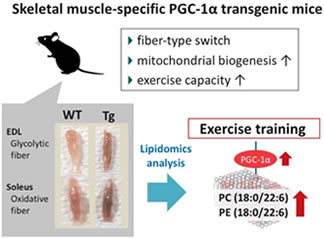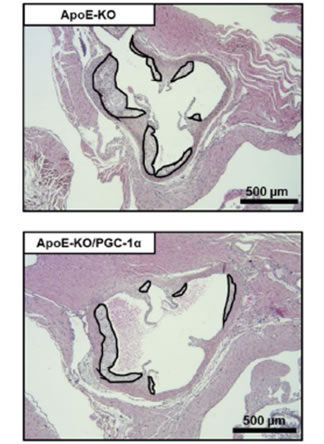Nutritional Biochemistry

- account_circleShinji MiuraPhD, Prof.
- account_circleTomoki SatoPhD, Research Asst. Prof.
- Website:https://www.shizuoka-lnb.com
- Mail:miura@u-shizuoka-ken.ac.jp
- Phone:+81-54-264-5559
Mechanistic analyses for exercise training- and inactivity-mediated changes of skeletal muscle, and exercise induced medical benefits to the whole body.
- 1. Biochemical analysis of lipid quality (lipoquality) of skeletal muscle
Phospholipids, which are component of membranes, are thought to be involved in the control of cell functions. There are approximately 1,000 types of phospholipid molecules in the body, due to the combination of fatty acid species and polar groups to be bound. We are trying to test the hypothesis that changes in fatty acid species binding to phospholipids control skeletal muscle function.
- 2. Search for food ingredients and compounds that improve muscular function
Muscle atrophy can cause bedridden and need for nursing care and support. We are searching for food ingredients and compounds that maintain and improve skeletal muscle function and analyzing its action mechanism in order to solve locomotive syndrome, which is one of the problems in the super-aged society.
- 3. Effects of changes in skeletal muscle properties on the development of atherosclerosis
Exercise training cause various medical benefits to the whole body. Recently, it has become clear that the exercise induced changes in skeletal muscle properties contribute on these medical benefits. We are analyzing the relationship between changes in skeletal muscle properties and the onset of atherosclerosis using animal models.
- Figure 1
- PGC-1α-mediated changes in phospholipid profiles of exercise-trained skeletal muscle (J Lipid Res, 2015)

- Figure 2
- Skeletal muscle-specific PGC-1α overexpression suppresses atherosclerosis in apolipoprotein E-knockout mice (Sci Rep, 2019)

References
- Sci Rep, 9, 4077 (2019)
- PLoS ONE, 13, e0195753 (2018)
- J Nutr Biochem, 50, 83-94 (2017)
- Metabolism, 65, 1646-1656 (2016)
- J Lipid Res, 56, 2286-2296 (2015)